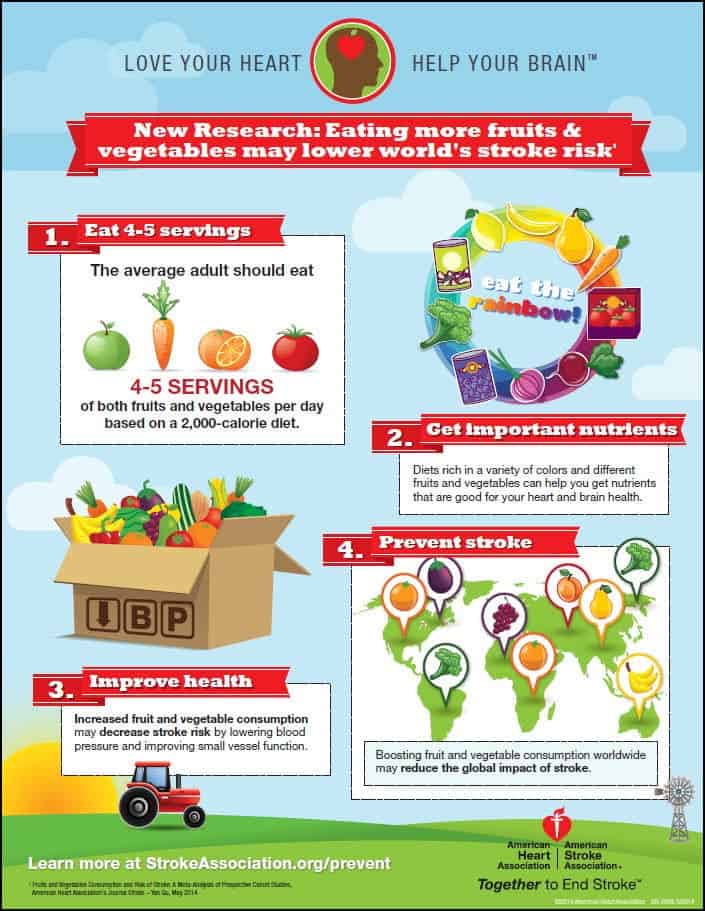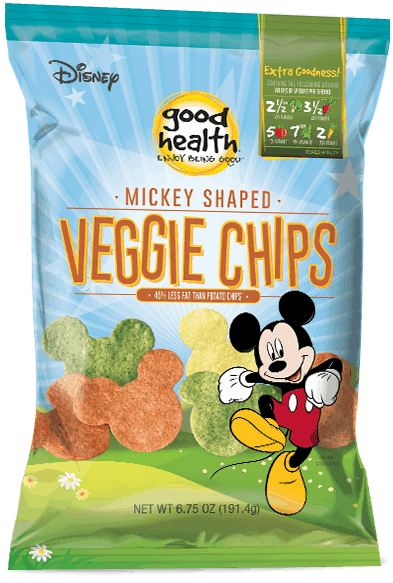National Nutrition Month 2017 Infographic
In honor of National Nutrition Month, we wanted to share an infographic with you about nutrition guidance for healthy children. The infographic was created by the Academy of Nutrition and Dietetics. Enjoy!

In honor of National Nutrition Month, we wanted to share an infographic with you about nutrition guidance for healthy children. The infographic was created by the Academy of Nutrition and Dietetics. Enjoy!

According to the Center for Disease Control (CDC), mental illness remains a significant public health disease, such that 25% of American adults suffer from it. What makes mental illness the serious problem is that it is also associated with other diseases like diabetes, obesity, and cardiovascular diseases.
The extent of mental illness in the country is very alarming. With the advancements in medical science, you would think that mental illnesses would have decreased with the many interventions available for patients. But, no. The number of patients suffering from mental illnesses is still increasing.
Conventional treatments for mental illnesses include medications, psychotherapy, and group therapy. While these are compelling enough, most experts believe that aside from these conventional treatments, diet can play a crucial role in treating mental disorders.
Eating healthy foods does not only prevent metabolic disorders like diabetes and obesity, but it can also bring benefits for mental health. A research study conducted by the Department of Psychology at the University of Otago in New Zealand noted that increasing the intake of fruits and vegetables can improve the psychological health of individuals within two weeks.
Lead researcher of the study, Dr. Tamlin Conner, noted that young adults who were given more fruits and vegetables to consume for 14 days experienced a boost in their vitality and motivation. The study involved 171 students between 18 and 25 years old. The subjects were divided into three groups wherein one continued their normal eating pattern while the other group was given additional servings of fruits and vegetables. The last group received vouchers and were reminded through text messages to eat more fruits and vegetables.
The participants were also asked to undergo psychological assessments to assess their vitality, mood, and symptoms of mental illness. Participants who belong to the second group–those who consume more fruits and vegetables–experienced more improvements in their mental well-being. The effects were seen after just two weeks of consuming vegetables and fruits.
Researchers noted that consuming at least three servings of fruits and vegetables daily can be beneficial to your mental health. But what happens to the body if you consume more fruits and vegetables? When you eat the right kinds of food, your body produces more serotonin, which is a hormone that regulates mood, sleep, and appetite. Serotonin is made in the digestive system thus feeding the good bacteria in your gut can help increase the serotonin.
People who eat foods with prebiotics (good bacteria) like leafy green vegetables can contribute to reducing levels of anxiety and improve the mental outlook. Aside from fruits and vegetables, it is also crucial for people to avoid certain types of foods such as white sugar, processed food, and refined ingredients. Vegetables and fruits are good, but you can increase your mental health if you also eat unadulterated and fermented foods.
A healthy diet can go a long way as it does not only help the body heal physically, but it also helps improve your mental health.
Inspired by food.ndtv.com
Fruit juices are perceived as healthy beverages, but the media has reported that many smoothies and kid’s juices contain higher amounts of sugar than carbonated drinks like soda. Sugar is now well researched as the culprit to different metabolic disorders like obesity and diabetes. The fruit juice market has been hit hard by the negative aspects of sugar with a decline in sales over the past few years. Juice producers have a new opportunity to bring back the healthy image that they present to their customers by adding more vegetables to their juices in turn lowering the sugar and calorie content.
In recent years, many consumers have developed an interest for vegetable juices for health reasons. With public campaigns encouraging people to consume more vegetables daily and more celebrity chefs preparing vegetable recipes, consumption of vegetables have been glamorized.
The vegetable trend has led to the rise of different diet movements like flexitarians (semi-vegetarians), vegetarians, and vegans. It has also opened many opportunities for restaurants and the food industry to provide products that meet these new needs of consumers. We are starting to see products like vegetable spiralizers, cold-pressed juicers, and ready-made vegetable juices on market shelves.
Multiple brands have acceded to the bandwagon of incorporating vegetables into their fruit juices. One such company is a Japanese corporation, Kagome. The Japanese consumer demands healthy options and new flavors in their fruit juices and what better way to provide it to the customers than putting vegetables into their fruit juices.
Another company that has incorporated vegetables in its juice products is Coldpress Ltd. The fruit juices are not heat-pasteurized to retain the taste and nutrients of the finished product. Sugar is no longer added to their juices as they rely on the natural sweetness of the fruits for the sugar content.
Aside from fruit juices, some trends are being adopted by beverage brands. As vegetables have been incorporated to add more health value to fruit juices, other trends have also sprung to improve the nutritional profile of fruit juices. Below are the new trends that have taken the fruit juice industry by storm.
Inspired by blog.euromonitor.com
Vitamins and minerals are critical to cell function in our bodies. The body’s ability to efficiently absorb nutrients is the reason why we are now living longer than our ancestors. There are multiple ways to get essential minerals and elements into our body, and while the most traditional method is by eating food, many people prefer to take dietary supplements.
Dietary supplements are pills or powders not approved by the FDA that contain nutrients that people adopt to increase the sufficient quantities of vitamins and minerals that they need. Supplements include not only vitamins and minerals but also amino acids, fiber, protein, and fatty acids.
To date, there are more than 50,000 dietary supplements available in the United States. In fact, 55% of the adult population take one or more nutritional supplements per day; with the majority consuming the popular multivitamins.
The dietary supplement industry is a multibillion-dollar industry, and many people are caught in the hype of taking supplements for health reasons. However, the problem is that people take in supplements with the assumption that they can prevent or treat diseases. Most people forget to eat a healthy and balanced diet because they rely so much on supplements.
It’s crucial to realize that dietary supplements can never take the place of having a well-balanced diet. As mentioned earlier, popping pills cannot make up for your bad eating habits. Supplements are not magic pills, and you might still not be getting the nutrients you need if you don’t focus your attention on eating real foods.
Supplements are not regulated. Anyone can buy as many supplements as they want to take. Unfortunately, intake of dietary supplements without your doctor’s signal can also cause more harm than good. For instance, researchers from the Iowa Women’s Health Study noted that women aged 55 years old and above have not gained significant benefits in taking calcium supplements. On the other hand, excessive intake of Vitamin E–a well-known antioxidant–can cause a higher risk of heart failure as well as premature death.
Because people are becoming aware that taking in supplements have more disadvantages than advantages, many have shifted to eating their nutrients instead. Nutrient-dense foods like vegetables, fruits, and whole grains contain micronutrients that are necessary for the cells to function properly. Moreover, these plant-based foods also contain dietary fiber that has many benefits like improving heart health, maintaining stable blood pressure and blood sugar. Lastly, these foods also contain phytochemicals that are compounds that help protect the body against certain diseases.
If you are looking for a way to still add food based vitamins to your diet because you still see deficiencies, you should try NutriFusion’s whole fruit and vegetable based vitamin blends. With one teaspoon, you will be able to add 50% daily value of 12 different plant-based vitamins including Vitamin A, C, D, E, K, B1, B2, B3, B5, B6, B7, and B9.
While this new trend of eating your nutrients to stay healthy is becoming popular, some nutritionists believe that consumers should not only rely on food as their source of minerals; like the body does not quickly absorb some minerals. In fact, scientists are working to create ways for the body to quickly absorb vitamins and minerals as well as make sure that that the minerals have a longer shelf life.
Inspired by www.fooddive.com
Global diabetes and heart disease rates have ballooned over the last 25 years. Among the countries that have the highest rate of diabetes and heart diseases, Mexico tops the list according to Dr. Kirsten Bibbins-Domingo. She is a UCSF professor medicine and director of UCSF Center for Vulnerable Populations. Another problem in the country is obesity. With the global obesity rate growing at 11% and 15%, respectively, for both men and women, Mexico harbors a lot of obese individuals in the world. It is strikingly alarming to take note that around 75% of adults in Mexico are obese.
To solve the problem, the Mexican government proposed a solution to address this chronic health issue by imposing a 10% excise tax on sugary drinks in 2014. This tax rate is designed to curb the consumption of sugary beverages. Thus, decreasing the number of people who have diabetes and cardiovascular diseases. Moreover, this strategy allows the government to save about $1 billion in direct health care cost due to these conditions.
In a study published in PLOS Medicine, simulation models of cardiovascular diseases and diabetes in Mexico was done. The simulation model was developed on the well-established model used in the United States in 1980.
Researchers from the Instituto Nacional Salud de Publica (INSP) in Cuernavaca in Mexico and from the UC San Francisco estimated that the sugary drink tax in the country will likely prevent 20,000 cases of heart attack, 190,000 cases of diabetes, and 19,000 deaths among adults from the age of 35 to 90 within the next ten years.
The sugary drink tax is not the only tool to turn around this health epidemic in Mexico, but it will also mean a lot of savings for the people and the government according to senior researcher, Simon Barquera. For instance, it will reduce healthcare spending such as clinic visits and hospitalization by as much as $983 billion. The health benefits will strongly be felt among young adults who are avid consumers of sugary drinks.
The World Health Organization (WHO) issued a report that indicated that imposing sugary drinks could decrease Type 2 diabetes, tooth decay, and obesity. Increasing the retail price to 20% can trigger a reduction in consumption because people will have second thoughts about buying expensive drinks.
Obesity is a rising problem in many rich and developing countries. The problem started more than a decade ago, and it has affected mostly people from the middle-income and lower-income bracket.
The sugary drink tax imposed in Mexico in 2014, according to WHO spokesman Paul Garwood, was favorable wherein the agency observed a substantial drop in the consumption of not only sugar but also caffeine.
Inspired by www.ucsf.edu/
A study published in May of 2014 indicated that eating more fruits and vegetables could lower the world’s risk of a stroke. Below is an infographic produced by the American Heart Association and American Stroke Association to give awareness to why fruits and veggies are so important for our diets. The infographic details the recommended servings per day, the essential nutrients for heart health, and how fruits and vegetables lower blood pressure to improve small vessel function.

See infographic here: www.strokeassociation.org
In 2013, global beverage volume sales reached 994.1 billion liters. The continuous rise of beverage drinks has consequently lead to a rise in the rate of obesity. According to Dr. Douglas Bettcher from the World Health Organization’s Department for the Prevention of Non-Communicable Diseases, consumption of free sugars from sugary drinks have contributed to the global obesity and diabetes pandemic.
Since 1980 the prevalence of obesity has more than doubled to 39% of people around the world in 2014. To make matters worse, there are an estimated 42 million children under the age of five who are suffering from obesity. Especially those in developing countries like Africa and Asia.
Nutritionists argue that while most of us have a sweet tooth, we don’t necessarily need free sugar in our diet. In fact, WHO recommends that people should consume free sugar below 10% of their energy needs. This means that an average adult may consume a single serving of sugary drink per day or a total volume of 250mL.

Dr. Francesco Branca from the WHO’s Department of Nutrition for Health and Development noted that foods with free sugar have high caloric value. So instead of consuming free sugar, it should be avoided like the plague to improve health conditions.
The alarming rise of obesity and diabetes all over the world is taking a toll on the global healthcare setting. The World Health Organization suggested that implementing higher taxation on sugary drinks to curb these two main health problems.
In the report released by the WHO titled Fiscal Policies for Diet and Prevention of Non-Communicable Diseases (NCDs), reduction of the consumption of free sugars as well as calories are seen as the answer to the global obesity pandemic. Free sugars include simple sugars like fructose and glucose as well as disaccharides like table sugar and sucrose. These are added to food by the food manufacturers when creating their products.
But how to do we decrease the amount of sugary drink consumption? WHO recommend adding high taxes to these sugary beverages to discourage people from consuming too many sugary drinks. Thereby reducing their risk to obesity as well as other sugar-related diseases like tooth decay.
People who are affected by obesity and diabetes often fall into the low-income level. Moreover, sugary drinks are often consumed by people in the low-income levels too! Taxation of sugary drinks will most likely affect these people, but they will also be the ones to gain the highest health benefits.
Aside from implementing higher taxation of sugary drinks, changes in fiscal policies to improve health should be undertaken. The World Health Organization recommended governments to subsidize fruits and vegetables to reduce the price by 30%. This will encourage more people to buy fruits and vegetables. Moreover, higher taxes on foods high in saturated fats and salt should also be implemented. Coupled with reduced consumption of sugary drinks, these fiscal policy changes will produce a lot of benefits for the health of individuals, globally.
Inspired by http://www.who.int
Clean eating is taking over as more people connect their health to the food they eat. Many consumers are moving away from eating artificial ingredients for better and healthier options. Food companies are taking advantage by adding fruits and veggies to a variety of convenient foods that consumers eat.
 This shift towards clean eating has not gone undetected by food manufacturers. As a result, many manufacturers have developed new products with one goal in mind and that is to create delicious products charged with clean ingredients.
This shift towards clean eating has not gone undetected by food manufacturers. As a result, many manufacturers have developed new products with one goal in mind and that is to create delicious products charged with clean ingredients.
In a study conducted by the Produce for Better Health Foundation in 2015, researchers noted that the per capita consumption of vegetable decreased to 7% in the years 2009 to 2014. This was attributed to people consuming fewer side dishes during their meals.
The US Department of Agriculture recommends eating at least five cups of fruits and vegetables every day, but Americans only average two cups daily. This dietary problem was acknowledged and seen as an incredible opportunity for food manufacturers to create food products that use fruits and vegetables creatively to fill the nutritional void in most Americans.
Companies such as Archer Daniels Midland, Green Giant and B&G Foods are now rolling out new products that sneak fruits and vegetables in them. For instance, the Green Giant brand introduced a new line of frozen veggie products like mashed cauliflower, veggie tots, and roasted vegetables.

Vice president and general manager of Green Giant, Jordan Greenberg, noted that many consumers are looking for products that are not only convenient but also healthy. Many companies are seeking alternatives to starches as well as looking for ways on how to introduce vegetables to children in the most appealing ways.
While this trend is very popular today, many marketing analysts of food companies believe that the trend will not die down anytime soon. In the food prediction trend called The Pinterest 100, the website noted that people will still continue to follow the trend of cutting their calorie intake by swapping vegetables for their carbohydrate and meat comfort foods.
Aside from prepared foods and meals, food manufacturers have also created drinks that are based on fruits and vegetables. Unique combinations of fruit drinks like ginger-pumpkin-orange or cucumber-kiwi-spinach have already found their way onto store shelves.
With the increasing obesity rate in the United States, many Americans are trying to eat clean and better. The problem is that most consumers are not willing to give up their comfort foods, so they don’t bother doing clean eating at all. As a result, a large population of Americans remains overweight. To answer the need of consumers for satisfying yet clean and healthy foods, many food businesses have found a new niche and have innovative products that incorporate fruits, vegetables, and other natural ingredients to provide real nutrition and not just empty calories to consumers. This results in a win-win situation for both consumers and food manufacturers.
Inspired by fooddive.com/news/vegetable-food-innovation


© Copyright 2025 NutriFusion LLC | All Rights Reserved.
